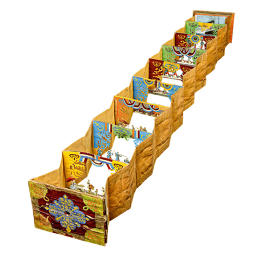
 Long before Oculus Rift and HTC Vive, the paper peep show—a small, layered diorama that expands like an accordion to create the illusion of depth—was a way for audiences in the 19th century to peer into times and places beyond their own experience.
Long before Oculus Rift and HTC Vive, the paper peep show—a small, layered diorama that expands like an accordion to create the illusion of depth—was a way for audiences in the 19th century to peer into times and places beyond their own experience.
"They look quite unassuming when they’re collapsed. You don’t realize the depth that they have, and you don’t quite know what to expect initially," she said. "They have a title, but it’s only when you peep into the hole that the landscape unfolds."
Paper peep shows were invented in the early 19th century in Germany and Austria, and they run the gamut in size and style. Some are as small as a matchbox while others stretch to two meters long; some are handmade and others were mass-produced and then hand-painted. Peep shows typically depict historical events, contemporary entertainment, and engineering feats, as well as foreign or imaginary locales.
Peep shows, also known as tunnel books, are widely considered to be the ancestors of animation and film.
See the full story here: https://www.fastcodesign.com/3062465/paper-peepshows-were-the-virtual-reality-of-the-19th-century